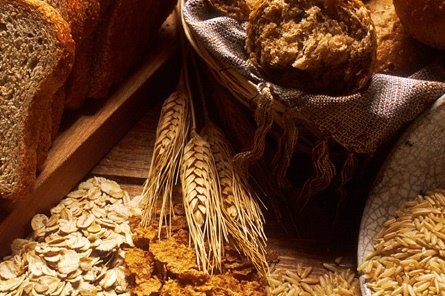
The gluten free diet is a medically necessitated diet…for some people. It is also the newest diet trend sweeping the nation.
So what is gluten? Gluten is protein found in wheat, rye and barley. For some individuals, consuming gluten in any form causes an immune response that damages the small intestine. This damage is a big deal. The lining of the small intestine contains million of tiny, fingerlike projections called villi. Villi function to absorb nutrients from the food we eat. In people with celiac, consuming gluten destroys the villi and limits the body’s ability to absorb nutrients.
Currently, it is estimated that celiac disease affects approximately 1% of the U.S. population. This is about1 in every 133 people and this number may be on the rise. The only treatment for celiac disease is strict adherence to a gluten free diet. And gluten seems to be in everything: pasta, pizza, breads, gravies, sauces, soups and more. Grains to avoid and grains that are safe for the gluten free diet are listed below:
|
Grains to Avoid |
Safe Grains/Grain Alternatives |
|
|
Wheat (includes spelt, kamut, semolina, triticale) |
AmaranthBuckwheat
Corn |
Bean/Legumes(chickpeas, lentils, peanuts, soy, kidney, navy etc. |
|
Rye Barley (including malt) |
MilletQuinoa
Rice |
Nuts(almonds, walnuts, chestnuts et) |
| SorghumTeff
Oats* |
Tubers(Arrowroot, potato, tapioca et. | |
*There is currently some controversy surround the safety of oats in the gluten free diet. Rolled oats are subject to significant cross-contamination during processing. Steel-cut oats are currently acceptable; however proteins in oats called avenins are currently being studied for potential reactivity in gluten free patients. At this time, oats are allowed in the gluten free diet based on individual tolerance
Following the gluten free diet has gotten much easier in the past few years. Gluten free products are becoming more mainstream. They are more available in regular grocery stores and more companies are beginning to manufacture gluten free products or at least label that their products are gluten free. The quality of gluten free products is improving as well. But there are still nutritional challenges with the diet. Gluten free products are typically not enriched or fortified with iron, folate, B vitamin, niacin, riboflavin or thiamin like normal grain products. Gluten free products typically contain much less fiber as well, since white rice flour is often a main ingredient. Finally, to compensate for poor flavor or texture, gluten free products often have more sugar or fat added to them, which can lead to weight gain.
The moral of this story is that unless you have been diagnosed with celiac disease by a licensed, medical practitioner there is absolutely ZERO reason for you to follow a gluten free diet. In fact, it can be harmful to your health if you don’t plan properly due to a lack of several nutrients. Any major diet change, be it gluten-free, vegan – whatever—should be discussed in with your medical provider and registered dietitian to make sure you are getting the calories and nutrient that you need.
Please note: There are very specific tests and procedures used to diagnose celiac disease. It is not recommended to begin following a gluten free diet until these have been completed. Please contact your medical provider for more information.
Fasano, A., Berti, I., Gerarduzzi, T., Not, T., Colletti, R., Drago, S., & … Horvath, K. (2003). Prevalence of celiac disease in at-risk and not-at-risk groups in the United States: a large multicenter study. Archives of Internal Medicine, 163(3), 286-292.
Fric, P., Gabrovska, D., & Nevoral, J. (2011). Celiac disease, gluten-free diet, and oats. Nutrition Reviews, 69(2), 107-115. doi:10.1111/j.1753-4887.2010.00368.x
Green, P., & Cellier, C. (2007). Medical progress: celiac disease. New England Journal Of Medicine, 357(17), 1731-1743
-Submitted by Chelsea Rambo, MS – USD Dietetic Intern

